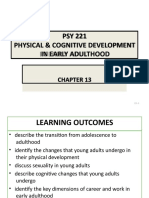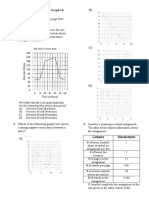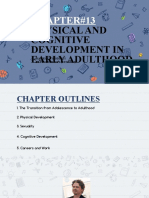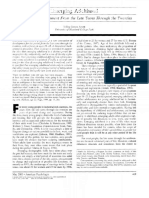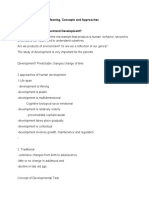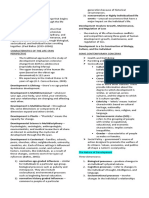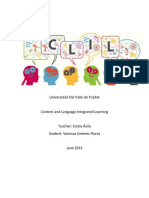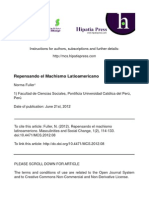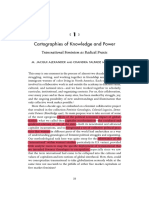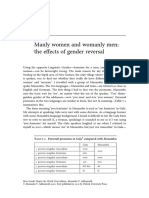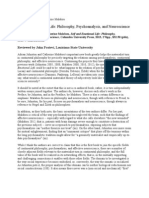THE DISTANCE BETWEEN YOUR DREAMS AND REALITY IS CALLED ACTION
WRITING TASK 1
Exercise 1:
1
� THE DISTANCE BETWEEN YOUR DREAMS AND REALITY IS CALLED ACTION
Answer:
The bar chart compares and contrasts data on the changes in expenditure on drugs and alcohol over an 18-year period from 1975 to
1992.
In general, more money was spent on alcohol than on drugs over this whole time period.
More specifically, despite obvious fluctuations in sales, the overall increase in sales of alcohol was from $146 billion in 1975 to
$148 billion in 1992, a rise of $2 billion. In contrast, drug sales rose from $35 billion to $98 billion over the same period of time,
slightly less than a threefold increase. Both alcohol and drug sales peaked in 1980 with figures of $186 billion and $102 billion
respectively, the latter being a little less than the sales of alcohol in 1985 at $104 billion. The biggest difference in sales between
alcohol and drugs, in any one year, was in 1975 where sales were $146 billion and $35 billion respectively, a difference of $111
billion.
2
� THE DISTANCE BETWEEN YOUR DREAMS AND REALITY IS CALLED ACTION
Exercise 2:
3
� THE DISTANCE BETWEEN YOUR DREAMS AND REALITY IS CALLED ACTION
Answer:
The bar chart compares and contrasts data on the changes in the amount of television watched per week by men and women from
different age groups over a five-year period from 1995 to 1999.
In general, more television is watched by both men and women of 65 years old and above than any other group.
More specifically, both sexes in the oldest group watched a little over 35 hours per week in 1999. By contrast, the 4 to 15 –year- old
girls and their 16-to 24-year old conterparts in 1999 watched the least with a little less than 17,5 hours each. The biggest difference
between the two sexes in any age group was in the second youngest group where an approximate 17.5 hours was recorded for males
and a viewing time of a little over 22.5 hours for the opposite gender in 1999. The only two age groups where both sexes experienced
an increase in viewing time were for those viewers between 45 and 54 years of age and those between 55 and 64.
Note: Be careful when using synonyms for people of different ages. For example, if you use the phrase young people to replace the
word teenagers, you have actually widened the definition. Teenagers only refer to people who are between 13-19 years of age but
young people is a subjective word that could include people who are much younger than 13 and older than 19.
4
� THE DISTANCE BETWEEN YOUR DREAMS AND REALITY IS CALLED ACTION
Exercise 3:
5
� THE DISTANCE BETWEEN YOUR DREAMS AND REALITY IS CALLED ACTION
Answer:
The bar chart compares and contrasts data on the different proportions of involvement in the greenhouse effect of four categories of
gases.
In general, carbon dioxide contributes to the greenhouse effect far more than the other gases.
More specifically, carbon dioxide is the biggest contributor to enhancing the effect of global warming with a figure of 72.369%. This
contrasts markedly with the category consisting of miscellaneous gases which only adds 1.432 to this, a difference of about 71%.
The second main contributor, although with much lower figures than carbon dioxide, is nitrogen dioxide. This contributes to this
issue by almost a fifth (19%) and is a share that is nearly three times bigger than methane, the third most important category with
figures of 7.199%. The main gas listed here ( carbon dioxide) is a little over tenfold larger in its overal share than the third main gas
( methane) with figures of 72.369% and 7.199% respectively.
6
� THE DISTANCE BETWEEN YOUR DREAMS AND REALITY IS CALLED ACTION
Exercise 4:
7
� THE DISTANCE BETWEEN YOUR DREAMS AND REALITY IS CALLED ACTION
Answer:
The tables compare and contrast data on the changes in eight university selection priorities for male and female. Taiwanese students
considering studying abroad over an 11-year period from 1998 to 2008.
In general, ranking, the cost of accomodation and tuition remained the most important factors in deciding which university to go for
both sexes over this period of time.
More specifically, although university ranking was the most important factor for both males and females in 1998 with 97% and
100% respectively, both sexes focused more on tuition costs in 2008 ( 97% and 95%). By contrast, teaching quality at 6% was the
least important consideration for male students in 2008 whereas their counterparts felt that teaching methods were with only 2% of
those surveyed selecting this. The biggest change in opinion for men was the teaching facilities, falling from 66% to 42% but for the
opposite gender, it was language support with a drop from 39% to 21%.

